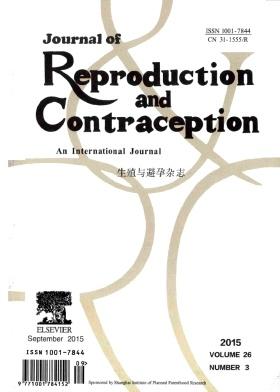Role of fatty acids and calcium in male reproduction
IF 0.7
4区 医学
Q4 OBSTETRICS & GYNECOLOGY
引用次数: 2
Abstract
Abstract Both fatty acids (FAs) and calcium ions play important roles in contraceptive cycles via several systems. Polyunsaturated FAs (PUFAs) act as precursors for prostaglandin production and can alter the expression of numerous crucial catalysts that are involved in prostaglandin and steroid digestion. Lipids are essential components of cell membranes. A diet rich in PUFAs enhances sperm motility and viability. It also improves testis development and spermatogenesis in several domesticated animal species. Increased PUFA content in spermatozoa increases plasma membrane fluidity, which is important for fertilization. However, the major drawback of high dietary PUFA intake is that it increases the levels of reactive oxygen species in the body. An increase in reactive oxygen species levels markedly affects fertility. Calcium is an important component that acts as an intra-cellular secondary messenger and plays an important role in some of the physiological processes that occur in male gametes. Some of these processes include spermatogenesis, sperm motility, capacitation, acrosome response, and fusion of gametes. These processes are associated with calcium influx through ion protein channels. Dietary fat intake is associated with increased intestinal calcium absorption. In this review, we discuss the impact of lipids, particularly PUFAs and monounsaturated FAs, and calcium ions on male reproduction, along with their effects on each other.脂肪酸和钙在雄性生殖中的作用
摘要脂肪酸和钙离子通过多种系统在避孕周期中发挥着重要作用。多不饱和脂肪酸(PUFA)作为前列腺素生产的前体,可以改变参与前列腺素和类固醇消化的许多关键催化剂的表达。脂质是细胞膜的重要组成部分。富含PUFA的饮食可以增强精子的活力和活力。它还改善了几种驯养动物的睾丸发育和精子发生。精子中PUFA含量的增加增加了质膜的流动性,这对受精很重要。然而,高膳食PUFA摄入的主要缺点是它会增加体内活性氧的水平。活性氧含量的增加显著影响生育能力。钙是一种重要的成分,作为细胞内的第二信使,在雄配子的一些生理过程中发挥着重要作用。其中一些过程包括精子发生、精子运动、获能、顶体反应和配子融合。这些过程与通过离子蛋白通道的钙内流有关。膳食脂肪摄入与肠道钙吸收增加有关。在这篇综述中,我们讨论了脂质,特别是PUFA和单不饱和FA,以及钙离子对雄性生殖的影响,以及它们之间的相互影响。
本文章由计算机程序翻译,如有差异,请以英文原文为准。
求助全文
约1分钟内获得全文
求助全文
来源期刊

Reproductive and Developmental Medicine
OBSTETRICS & GYNECOLOGY-
CiteScore
1.60
自引率
12.50%
发文量
384
审稿时长
23 weeks
 求助内容:
求助内容: 应助结果提醒方式:
应助结果提醒方式:


